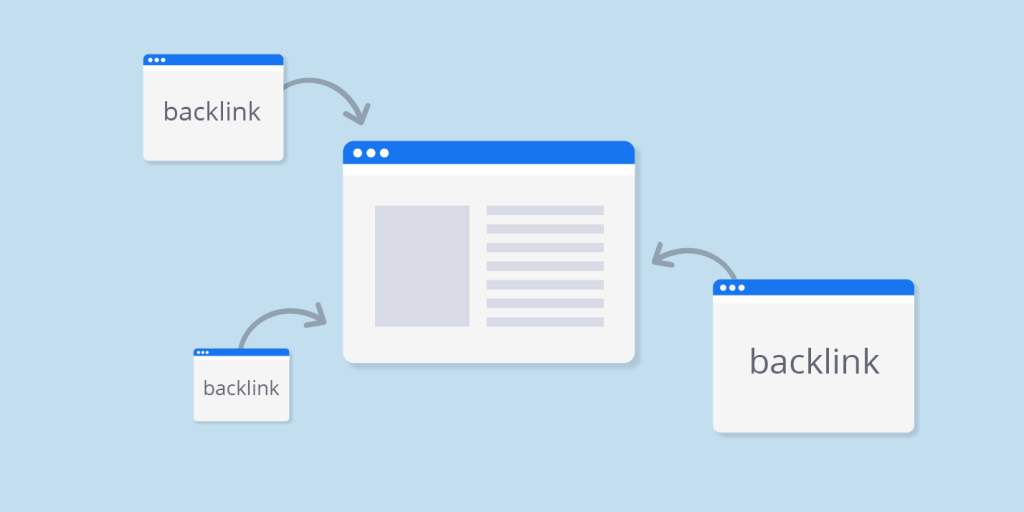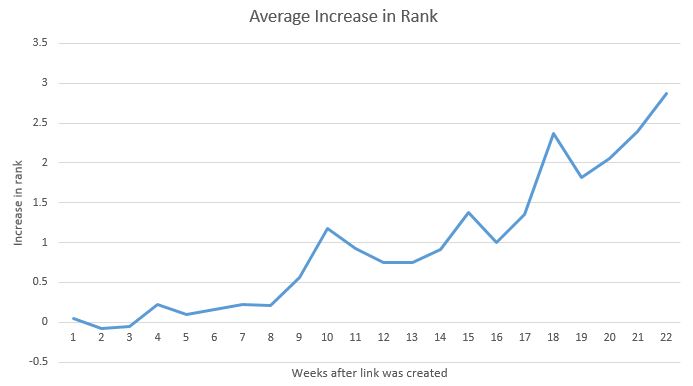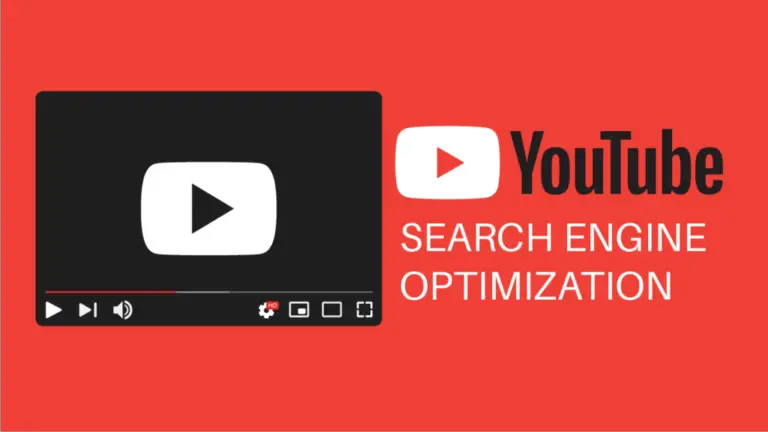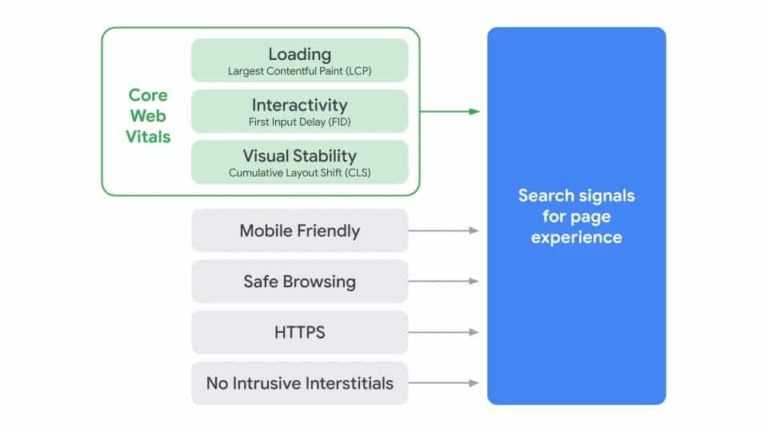Are you a blogger or content creator?
If yes, then, you must have created backlinks to rank higher in the SERPs of various search engines.
So, in this article, we are going to learn “What is Backlink?”, “How to create backlink?”, “How does backlink creation affect SEO?”, “How long does it take for backlinks to work?”, and many more. Let’s start with the detailed insights:
Before we move ahead, let us learn about backlinks.
What is Backlink?
The backlink is nothing but the creation of Hyperlinks from webpage “A” to webpage “B” or domain “A” to Domain”B”. This backlink is mainly created to increase the EAT value of the webpage.
Many SEO optimizers may consider making Backlinks for higher ranking in the SERPs of different Search Engines. The creation of the backlink must be at a very slow pace. If the Creation of backlinks is at a fast pace, then your website may become eligible for penalties granted by the Search Engine of Google.
For Example:

We have to create a backlink from one website to Another Website. Then, you look at the word, which is blue. This blue link represents a Do-Follow backlink pointing from newsbuddy to SEOHINDI.
Types of Backlinks:
There are two types of backlinks. These are
- Do-Follow Backlink
- No-Follow Backlink
Let us discuss these two terms in a detailed manner:
Do-Follow Backlink:
A do-follow Backlink is nothing but the creation of a backlink with the do-follow tag. This Dofollow tag helps to pass Link Juice from Domain “A” to Domain “B”. Thus, this transfer of Link Juice helps to increase the EAT value of the webpage for a specific keyword.
No-Follow Backlink:
No-follow Backlink is nothing but the creation of backlinks with a no-follow tag. This doesn’t help a lot to increase the authority of your domain. It also gives a positive signal to the webpage.
Effect of Backlink on SEO:
It is well-known content is King for Bots as well as Humans. Creations of the backlink have a very good effect on the SEO for ranking in the SERPs of the search engine.
Backlinks help to improve the EAT value of your website. A high EAT value stands for a high ranking in the SERPs.
Things That Influence Backlink Impact:
In this section, we are going to learn about the benchmarks that influence the backlink impact of your domain. These Benchmarks are listed Below:
- EAT Value
- Type of Link
- Site Age and Authority
- How Fast Domains Acquire Backlink
- Keyword Competitiveness
- Anchor Text
Let us discuss these variables or benchmarks in a detailed manner:
EAT Value:
The full form of the EAT is Expertise, Authoritativeness, and Trustworthiness. In other words, which domain is referring to a backlink to your blog is most important.
For Example:
I run a Blogging or Digital Marketing website and I am getting a backlink from other than the tech niche links Dressing, Journey, and many others. Then, the Backlink has no value or Zero Value.
E-A-T stands for Expertise, Authoritativeness, and Trustworthiness. The concept comes from Google’s Search Quality Rater guidelines and it became well known after the infamous Medic Update in August 2018. E-A-T is one factor that Google uses to evaluate the overall quality of a web page.
https://terakeet.com/blog/what-is-eat
Type of Link:
How backlinks impact your SERPs ranking also refers to what types of backlinks you are getting to your webpage?
For Example:
Dofollow Backlinks refer to webpages with Link Juice while No-Follow Backlink only refers to webpages without Link Juice.
Site Age:
Domain Age also has a very big impact on the SERP ranking. This backlink signals Serch Engine’s Crawler Bots regarding the trustworthiness of the domain or webpage.
An old-age domain will have a large number of backlinks which help it to rank higher in the SERPs while a new domain only ranks in a very competitive keyword.
How Fast Domain Acquire Backlink?
What is the pace to acquire backlinks for your domain is very important? As the acquisition of the backlinks acquired signals domains “how the domain is acquired?”
For example:
You acquired a backlink at a pace of 20 per month. It signals Google “you are building your backlink unnaturally?” This negative Signal will decrease the ranking in the SERPs.
How competitive is the keyword?
How many backlinks are required to rank on page 1 of the SERPs depends on how much the keyword is competitive.
For Example:
If you want to rank on the keyword “SEO“, then, You need more than 1000 Backlinks to rank on 1st page but a keyword like “Youtube SEO” only needs 100s backlinks as the keyword “SEO” is hard to rank in respect of keyword “Youtube SEO”.
Anchor Text:
The anchor text refers to the clickable words in a link. For example, this text right here is anchor text.
This Anchor text signals the search engine about the relevancy of the backlink.
Quality of the Backlink
- High Authority Sites: A backlink from a high-authority site (e.g., an authoritative news outlet or industry blog) may impact rankings faster, as search engines trust these sites more and tend to crawl them frequently.
- Low Authority Sites: Backlinks from low-authority sites take longer to make an impact, and in some cases, they may not influence rankings significantly at all.
Relevance of the Linking Site
- Niche Relevance: Links from sites closely related to your industry or topic have more weight. Google places more importance on backlinks from contextually relevant sites.
- Irrelevant Sites: Backlinks from unrelated or spammy sites can take longer to impact rankings, and in some cases, they may even have a negative effect.
Crawl Frequency
- Frequent Crawling: If the site linking to you is frequently crawled by Google (e.g., news sites or popular blogs), your backlink will be discovered and indexed more quickly, leading to a faster impact on rankings.
- Infrequent Crawling: For smaller or less active websites, Google may take longer to discover and index the backlink, delaying its impact.
Number of Backlinks
- Cumulative Effect: Building a steady flow of high-quality backlinks will lead to a stronger, more impactful change in rankings over time. One link may not move the needle much, but multiple strong links will have a compounded effect.
Content Quality
- High-Quality Content: If the page receiving the backlinks has well-optimized, high-quality content, it is more likely to rise in the rankings quickly. Backlinks combined with great content create a strong SEO signal.
- Low-Quality Content: Even with backlinks, low-quality content may not rank well, as Google’s algorithms also focus heavily on content relevance and user experience.
Google Algorithm Updates
- Google frequently updates its algorithm, and these changes can affect how quickly backlinks impact rankings. Some updates might reward certain types of backlinks or penalize others, causing fluctuations.
Backlink monitoring and analysis
Backlink monitoring and analysis is an essential part of SEO strategy, helping you track and assess the quality and quantity of links pointing to your website. This process ensures that your site maintains strong, relevant backlinks, improves search rankings, and avoids penalties from low-quality links. Here’s a breakdown of how you can manage backlink monitoring and analysis:
1. Why Monitor Backlinks?
- SEO Performance: Backlinks are a significant ranking factor for search engines. High-quality backlinks from reputable sites boost your ranking.
- Spam Detection: Monitoring helps you identify spammy or low-quality backlinks that could harm your website’s reputation and rankings.
- Competitive Analysis: Understanding your competitors’ backlink profiles helps you strategize and gain insights into their SEO efforts.
- Link Opportunities: Monitoring backlinks can help discover potential linking partners or opportunities to reach out for guest posts.
2. Key Metrics to Analyze
- Domain Authority (DA): Measures the strength of the linking domain.
- Anchor Text: The clickable text in a hyperlink, which should be relevant and optimized for SEO.
- Referral Traffic: Backlinks that drive traffic to your site are more valuable.
- Link Growth: Track whether your backlink profile is growing naturally.
- Dofollow vs. Nofollow: Dofollow links pass SEO value, while nofollow links do not directly influence rankings.
3. Backlink Monitoring Tools
- Ahrefs: Offers comprehensive backlink analysis, broken link identification, and tracking competitors.
- SEMrush: Provides backlink auditing, link-building strategies, and overall domain authority tracking.
- Moz: Allows you to check DA and analyze the link profile of your site and competitors.
- Google Search Console: This free tool provides insights into which websites are linking to your site.
- Majestic SEO: Specialized in backlink data and provides metrics like Trust Flow and Citation Flow.
4. Best Practices
- Audit Backlinks Regularly: Perform routine checks to ensure your link profile is healthy and contains quality links.
- Disavow Toxic Links: Use tools like Google’s Disavow Tool to remove harmful backlinks from your profile.
- Diversify Your Backlinks: Aim for a wide range of high-authority domains linking to your site.
- Focus on Quality Over Quantity: Fewer high-quality links are more valuable than numerous low-quality ones.
5. Competitor Backlink Analysis
- Identify Competitors’ Backlinks: Using tools like Ahrefs or SEMrush, analyze the backlinks of your competitors and identify potential sources for your link-building campaigns.
- Find Gaps and Opportunities: Look for websites that link to your competitors but not to you and consider reaching out for guest posting or partnerships.
Backlink outreach strategies:
Backlink outreach strategies are essential for acquiring high-quality backlinks that can boost your site’s authority and search rankings. Here are several effective strategies for successful backlink outreach:
1. Guest Blogging
- How It Works: Write high-quality articles for relevant blogs in your industry. In return, you typically receive a backlink to your site in the bio or within the content.
- Outreach Strategy:
- Identify blogs and websites that accept guest posts (using tools like Ahrefs, SEMrush, or even Google search operators).
- Personalize your pitch to the blog owner or editor.
- Propose content ideas that are relevant to their audience and align with your expertise.
- Pro Tip: Focus on authoritative websites that have good domain authority and are well-regarded in your niche.
2. Broken Link Building
- How It Works: Find broken links on websites, particularly those that reference content similar to yours, and suggest they replace the broken link with a link to your site.
- Outreach Strategy:
- Use tools like Ahrefs or Check My Links (a Chrome extension) to find broken links.
- Create or recommend content that would make a suitable replacement for the broken link.
- Reach out to the site owner, pointing out the broken link and suggesting your content as a fix.
- Pro Tip: Be polite and make sure your content is truly valuable to the website’s audience to increase the chance of a positive response.
3. Skyscraper Technique
- How It Works: Find high-performing content with many backlinks in your niche, create something even better (more comprehensive, updated, visually appealing), and reach out to the sites that linked to the original content.
- Outreach Strategy:
- Use tools like Ahrefs or BuzzSumo to find popular content with many backlinks.
- Create a more detailed, higher-quality version of that content.
- Reach out to the websites that linked to the original content, presenting your improved version as a better resource.
- Pro Tip: Focus on quality and make it clear how your content adds more value compared to the original.
4. Resource Page Link Building
- How It Works: Many websites maintain resource pages, where they list helpful tools, guides, or references. You can request to have your content or site added to these pages if it provides value.
- Outreach Strategy:
- Find relevant resource pages in your niche by searching for “resource page + [your niche keyword]” or similar terms.
- Make sure your content is relevant to the page and would genuinely provide value to the audience.
- Reach out to the webmaster with a polite email, explaining why your content should be included in their resource list.
- Pro Tip: Make it easy for the site owner by showing exactly how and where your content fits into their resource page.
5. Influencer Outreach
- How It Works: Partner with influencers or thought leaders in your industry to get backlinks from their websites, mentions in blog posts, or social media.
- Outreach Strategy:
- Identify influencers in your niche who have authoritative websites or blogs.
- Build a relationship by engaging with their content, sharing their posts, or providing value to them first.
- When you pitch, make it about mutually beneficial collaboration, offering something of value in return, like a guest post, interview, or co-created content.
- Pro Tip: Personalize your outreach and demonstrate your knowledge of the influencer’s content to increase your chances of getting a positive response.
6. Unlinked Mentions
- How It Works: If someone has mentioned your brand or product without linking to your site, you can reach out and request a link.
- Outreach Strategy:
- Use tools like Google Alerts, BuzzSumo, or Ahrefs to track unlinked mentions of your brand or content.
- Reach out to the site owner, thanking them for the mention and kindly asking if they could add a link to your site.
- Pro Tip: Be polite and emphasize the convenience of linking to your site for their readers.
7. Testimonials or Reviews
- How It Works: Many companies feature testimonials or reviews from customers or partners on their websites, often linking back to the reviewer’s site.
- Outreach Strategy:
- Identify companies or products you’ve used or supported and offer to provide a testimonial or review.
- Ensure the testimonial is genuine and offers real value to the company.
- Include your website link in your submission or profile to earn a backlink.
- Pro Tip: Target companies with high domain authority for the most SEO value.
8. HARO (Help a Reporter Out)
- How It Works: HARO connects journalists looking for expert sources with people who want to provide valuable insights. Providing quotes can result in a backlink if your contribution is used.
- Outreach Strategy:
- Sign up for HARO and monitor requests from journalists that fit your expertise.
- Respond quickly with well-written, thoughtful, and insightful answers.
- If your response is used, it often results in a backlink from reputable media sites.
- Pro Tip: Be consistent and offer genuinely useful content to increase your chances of being featured.
9. Link Roundups
- How It Works: Many blogs publish weekly or monthly “link roundup” posts featuring the best content in their niche. Getting featured can earn you a backlink.
- Outreach Strategy:
- Find link roundups relevant to your niche by searching for terms like “best [niche] blog posts this week” or “monthly [niche] roundups.”
- Create high-quality content that is likely to be included in these roundups.
- Reach out to the blog owners or roundup curators and suggest your content for their next post.
- Pro Tip: Make sure your content is fresh, relevant, and better than what’s already in the roundups.
10. Ego Bait
- How It Works: Ego bait involves creating content that highlights or features other influencers, brands, or websites, encouraging them to link back to you when they share or mention your content.
- Outreach Strategy:
- Create a list of top influencers, best products, or expert quotes, featuring people in your niche.
- Let the featured influencers or brands know that they have been mentioned in your content.
- Politely ask them to share it with their audience or link to it from their own site.
- Pro Tip: Make sure the content is well-researched and positions the featured people or brands in a positive light.
By combining these strategies and tailoring your outreach efforts to your target audience, you can build a robust backlink profile that supports your SEO goals. Let me know if you need specific templates for outreach or help with finding backlink opportunities!
Patience and persistence:
When it comes to backlink outreach (or most other growth strategies), patience and persistence are critical to long-term success. Here’s why these two qualities matter in backlink outreach, along with tips on how to incorporate them into your strategy:
1. Building Relationships Takes Time
- Patience: Establishing genuine relationships with website owners, bloggers, and influencers doesn’t happen overnight. It may take several interactions before they’re open to linking to your content. Consistently engaging with their content, offering value, and building trust are essential.
- Persistence: Don’t be discouraged if you don’t get a response right away. Many bloggers and editors receive numerous pitches daily. Politely follow up after a week or two to remind them of your request. Tip: When following up, show that you respect their time. Acknowledge their busy schedule and briefly reiterate the value you’re offering.
2. Content Refinement
- Patience: Your content may not immediately attract backlinks, especially if your website is new or lacks visibility. It takes time for high-quality content to gain traction, both with search engines and with potential linkers.
- Persistence: Continuously refine your content based on feedback, engagement metrics, or evolving industry trends. Updating content keeps it relevant, increasing its chances of attracting backlinks over time. Tip: Periodically revisit and update your outreach targets and content offerings based on feedback and current industry relevance.
3. Trial and Error
- Patience: Not every outreach campaign will result in successful backlinks. You might have to test different strategies, messaging styles, and content types to see what resonates with your target audience.
- Persistence: Track the effectiveness of your outreach efforts, learn from rejections, and adjust your approach. Keep testing new angles until you find what works best for your niche. Tip: Treat every outreach campaign as a learning experience. Keep records of what works and what doesn’t, and refine your approach as needed.
4. Organic Growth
- Patience: Organic backlink growth is a slow process, especially if you’re relying on content marketing. The more valuable your content becomes, the more backlinks it will naturally attract over time.
- Persistence: While waiting for organic backlinks, actively promote your content through guest posts, social media, and partnerships. Stay consistent in promoting and producing high-quality content, as this will amplify organic link-building. Tip: Create evergreen content that remains relevant and valuable over time, increasing its chances of continuously earning backlinks long after publication.
5. Rejection and Non-Response
- Patience: Many outreach emails won’t get responses, and that’s normal. Some may even reject your pitch outright.
- Persistence: Treat rejection as part of the process. Follow up politely, refine your pitch, or move on to the next prospect. Persistence is key, as not every opportunity will yield a backlink, but consistent effort increases your chances of success. Tip: For every rejection, refine your pitch to better match the website’s needs and try again with new prospects.
6. SEO Results
- Patience: Even after acquiring backlinks, seeing significant improvements in your SEO rankings may take weeks or even months. Search engines need time to index new backlinks and adjust rankings based on the growing authority of your site.
- Persistence: Keep building backlinks even if you don’t see immediate results. SEO is a long-term game, and backlink strategies require consistent effort to build sustained success. Tip: Focus on building a consistent flow of quality backlinks rather than short-term boosts. Long-term SEO growth is more sustainable when backlinks accumulate naturally over time.
Combining Patience and Persistence
- Track Progress: Use tools like Ahrefs, SEMrush, or Google Search Console to monitor your backlink profile and SEO improvements. This will help you stay motivated as you see gradual progress.
- Focus on Relationships, Not Just Links: Build authentic relationships with content creators, influencers, and site owners. Over time, these connections can lead to multiple backlinks or other opportunities.
- Stay Positive: Results may take time, but each effort compounds over time. Celebrate small wins, such as receiving a reply, landing a guest post, or noticing an SEO ranking improvement, to stay motivated.
Being patient and persistent in backlink outreach ensures that your efforts accumulate over time, leading to long-term growth and sustainable SEO success.
How Long Do Backlinks Take to Impact Rankings

A study conducted by Moz reveals the backlink has minimal impact in the initial days while the impact will increase daily. If you create this backlink from a new webpage while if you get a backlink from the old one, the backlink will have a very high and severe impact on the SERP ranking.
The time it takes for backlinks to impact rankings can vary, depending on several factors such as the quality of the backlinks, the competitiveness of your niche, and the frequency with which search engines crawl your site. Here’s a detailed breakdown of the timeline and factors affecting how long backlinks take to impact rankings:
General Timeline for Backlink Impact
- Immediate to 1 Week:
- Crawling & Indexing: After acquiring a backlink, search engines like Google must first crawl the linking site and find the new link to your page. This can happen within a few days or up to a week, depending on the crawl rate of both the referring site and your own site.
- Initial Signs: While a backlink might get discovered quickly, don’t expect any significant impact on rankings within this period. At this stage, search engines are simply indexing the new link, not adjusting rankings.
- 1 to 3 Months:
- Gradual Ranking Adjustments: Once a backlink is indexed, it can start influencing your ranking, but this impact may be subtle at first. During this period, search engines evaluate the relevance and authority of the backlink.
- Ranking Fluctuations: It’s common to see fluctuations in your rankings as Google reassesses your backlink profile and the SEO value of the new links.
- Multiple Backlinks: If you’re earning several high-quality backlinks, the cumulative effect may begin to show noticeable changes in rankings, especially for low- to medium-competition keywords.
- 3 to 6 Months:
- Significant SEO Impact: This is typically when the full impact of backlinks starts to be seen. If you’ve built high-quality backlinks from authoritative and relevant sites, you may see considerable improvements in keyword rankings and organic traffic.
- Domain Authority Growth: Strong backlinks help boost your domain authority (DA), leading to more consistent improvements in your search rankings over time.
- 6 to 12 Months:
- Long-Term Effects: By this time, the backlinks you’ve earned will have fully contributed to your SEO, especially if they’re from reputable sources. Search engines may also continue to reassess the overall strength of your backlink profile, leading to sustained improvements in rankings.






